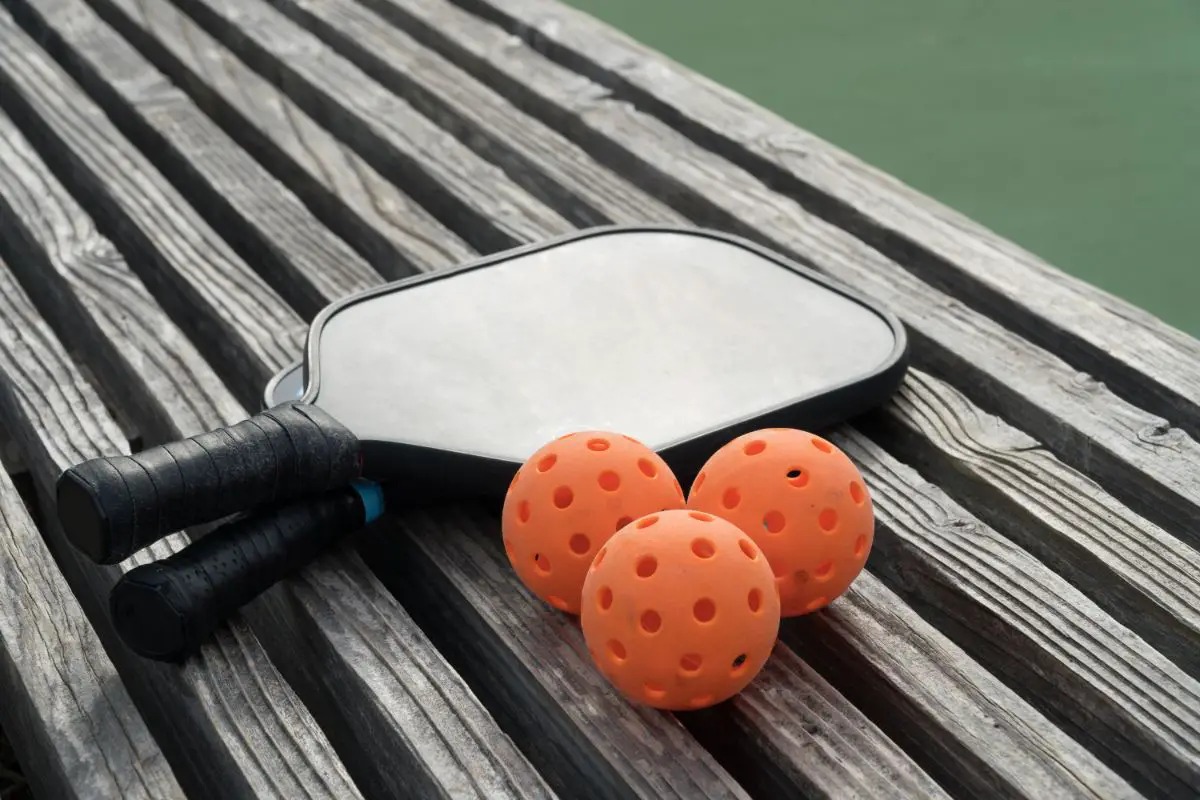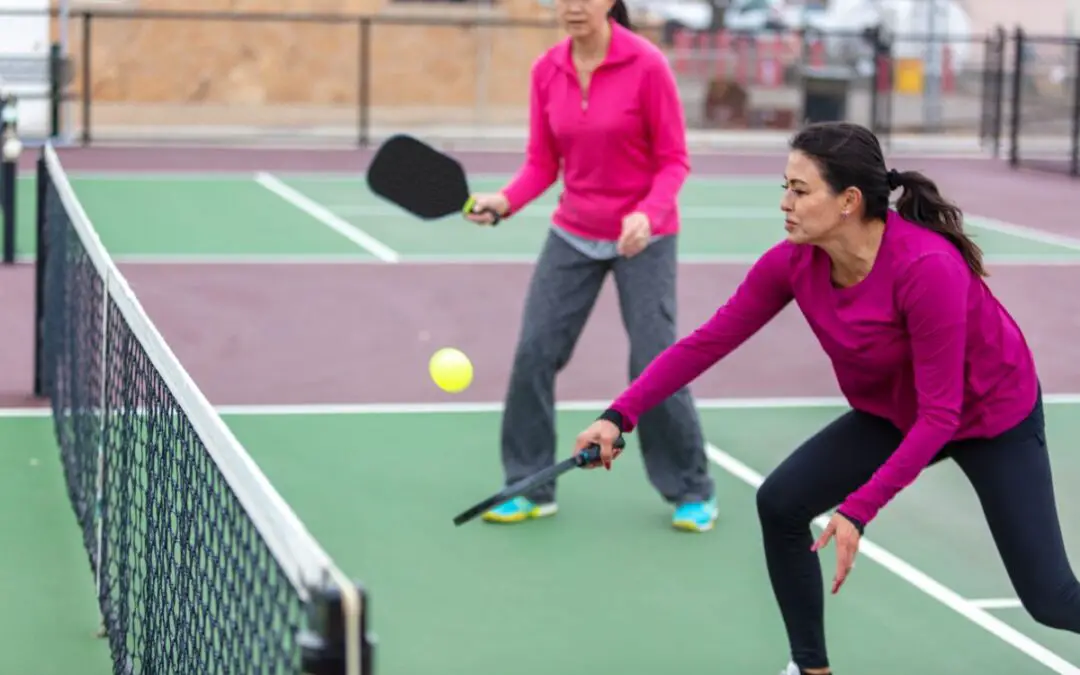To hold a pickleball paddle properly should mean choosing between one of three grips.
These include the Western Grip, the Eastern Grip, and the Continental Grip.
Once a player has practiced and worked out their preferred grip, they should decide on their Ready Position and whether they want to hold the handle from the top or the bottom.
From the top, a pickleball player can have more control yet from the bottom of the handle comes more power.
In this guide, we will look at holding the pickleball paddle (see also ‘3 Best Engage Pickleball Paddles You Need In Your Life‘) from the top or bottom of the handle, the Ready Position, and each of the three grips.
How To Hold A Pickleball Paddle
Choosing your ideal grip is an important step to finding out the best way to hold a pickleball paddle (see also ‘Best Pickleball Paddles For Intermediate Players‘).
A more prominent decision may be whether to hold the paddle from the top or the bottom of the handle.
Holding the paddle from the bottom should mean more reach and even more power as you have a longer lever to play with.
From higher up the paddle, there may be less available power from a shorter lever but that does come with more control.
The Ready Position
Your arm position is crucial so hold out the playing arm and find out which position you prefer as the Ready Position.
It may be at the 9, 10, or 12 o’clock position that you find most comfortable. Be prepared to have your hands in the right place so you can anticipate the next shot and hit it confidently.
The Grip Of A Pickleball Paddle
Once you hold a pickleball paddle (see also ‘Best Pickleball Paddle For Control‘), find the grip that feels the most comfortable. That will be the grip that ideally suits your game style and feels the most natural when you are playing.
There are three to choose from: the Western Grip, the Eastern Grip, and the Continental Grip.
The Eastern Grip
The Eastern Grip, also known as the ‘Shake Hands’ grip, is arguably the most common grip you can find in pickleball.
While you may be used to changing grip as you switch from backhand to forehand and back again, this becomes a neutral grip that you can use for both shots.
By not having to switch the grip, this may be a grip that is fairly easy to learn and stick with.
To use the Eastern Grip, lay the playing hand onto the paddle’s face. Lower the hand down until it grips the handle comfortably.
If you look at the grip, your hand should be in the same position as if you were shaking someone’s hand.
The Western Grip
One of the lesser-known pickleball grips is the Western Grip which is also known as the ‘Frying Pan’ grip.
As you may expect, the grip does look like the one you would use to secure a frying pan. The Western Grip does tend to favor a forehand grip and can bring so much spin to a shot.
That element of spin is a benefit to the grip yet one apparent drawback is how the grip forces a tricky angle to use for a backhand shot.
If you happen to see a pickleball paddle being held somewhat strangely, it is probably the Western Grip being used as both the backhands and the forehands will be hit from the same paddle side (see also ‘How To Hit A Forehand With Topspin‘).

To use the Western Grip, you want to start by finding the Eastern Grip. Have the playing hand at the paddle’s face then lower it before gripping the handle.
While holding the handle, rotate your paddle between 60 and 90 degrees in the direction of the ground.
The grip should look like you are holding a frying pan, it should be the left side of your paddle face for right-handed individuals and that right side for left-handed individuals.
The Continental Grip
Finally, there is the Continental Grip which is essentially the opposite to the Western Grip.
The popularity of the grip relates to how players may stick to one backhand grip especially for blocking volleys while they remain positioned from the kitchen line.
While there is that specific benefit to the grip, it can make a forehand increasingly difficult unless you decide to change your grip.
To use the Continental Grip, use the Eastern Grip first and then have the playing hand on the paddle face.
Drag that hand down and then grip your handle. Just like the Western Grip, ensure that you rotate your pickleball paddle around 60 to 90 degrees.
Final Thoughts
The most popular grip in pickleball is the Eastern Grip as it is neutral and versatile.
However, some players prefer the Western Grip or the Continental Grip for specific shots so you may want to change it up during a match.
After you have confirmed your favorite grip of the three and whether you hold the handle from the top or the bottom, you need to confirm your ready position.
As with many sports, you cannot stand on the court with your pickleball paddle by the side.
Frequently Asked Questions
How Tightly Should A Pickleball Paddle Be Held?
Ideally, the pickleball handle should be held but not too tightly. It may only need to rest in the fingers rather than on the palm of the hand.
This should mean a loose grip but not too loose as the pickleball paddle should still feel secure in your hand without it feeling choked.
How Do You Hit A Pickleball With Some Power?
To hit a pickleball with more power should require top-spin. That can be achieved by a quick snap of the wrist as the paddle makes contact with the pickleball.
This technique can introduce more power into the shot and the top-spin should force the pickleball down onto the side of your opponent.
The resulting shot should not be too deep and go out of bounds which can prove difficult to respond to.


